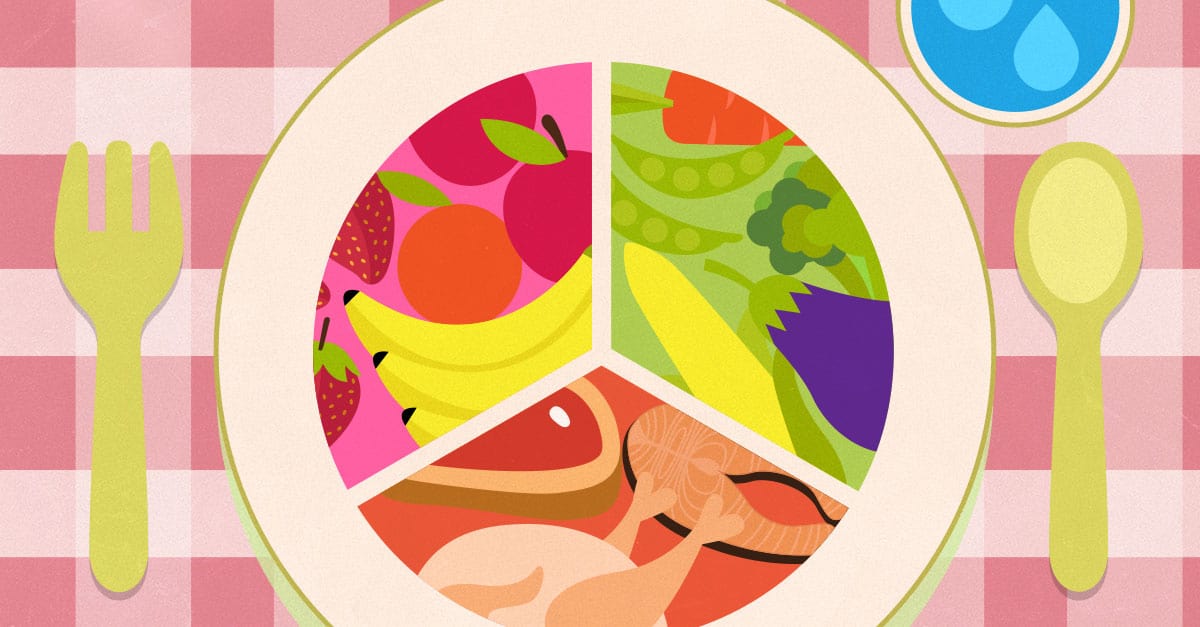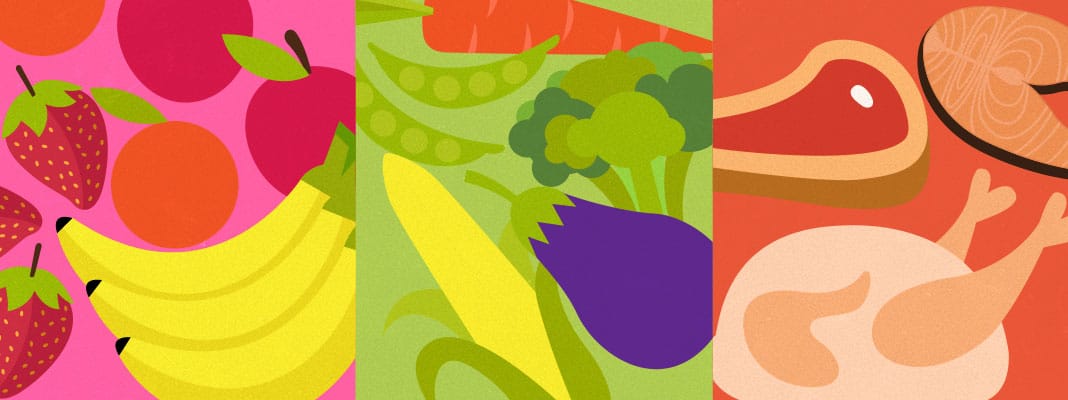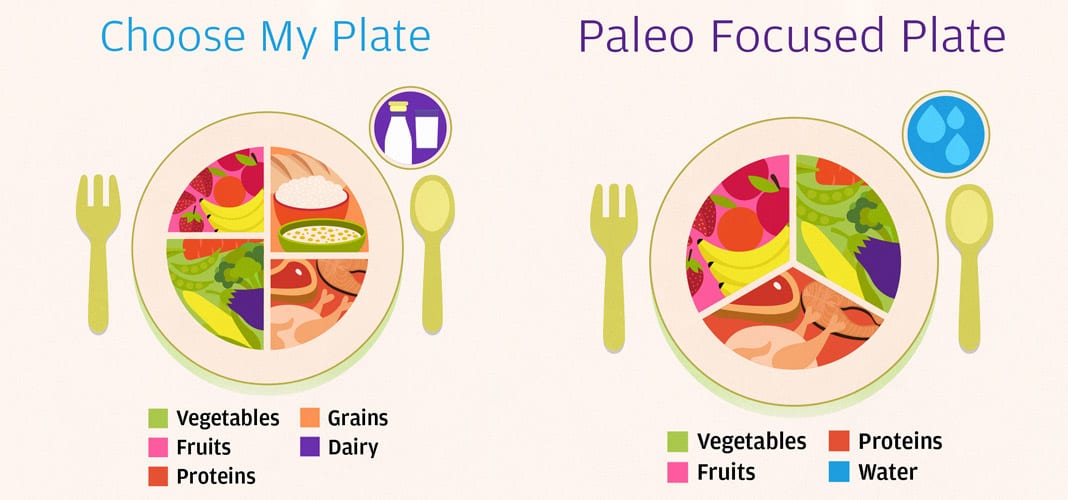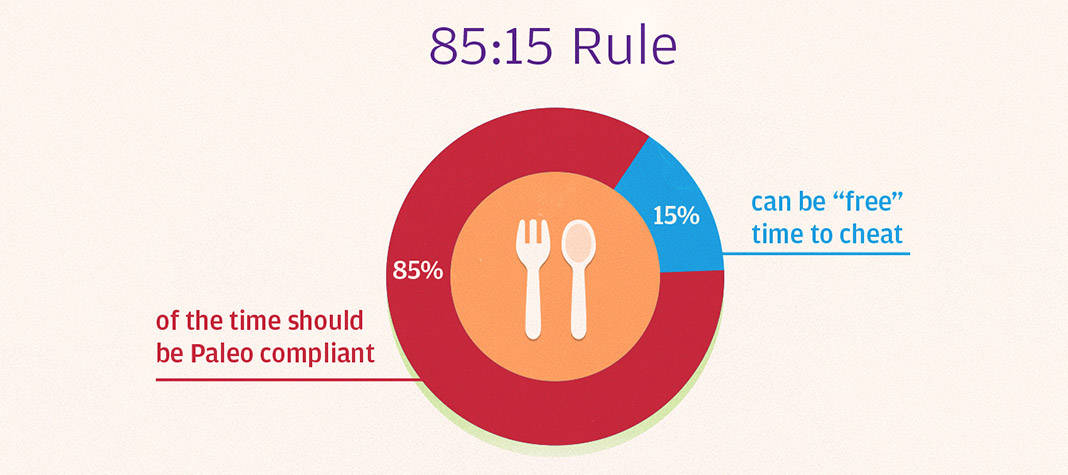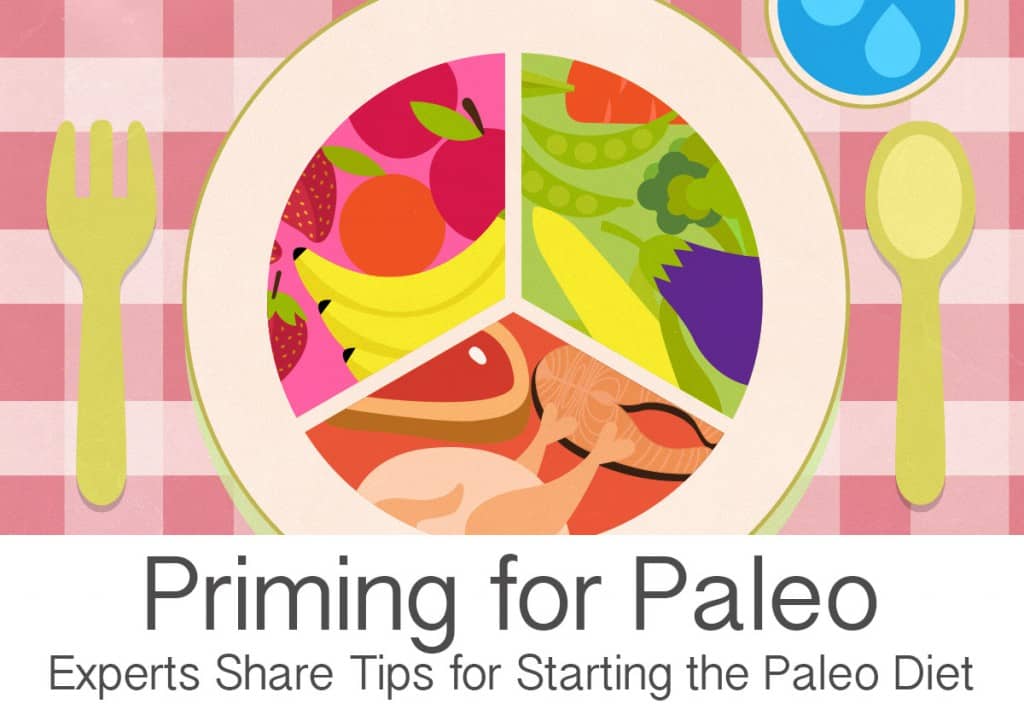The Paleo Diet continues to dominate headlines as the game-changing diet people love. Paleo, as most people refer to it, is not just a ‘diet.’ It is much more than that — it is a lifestyle. There are literally hundreds of websites dedicated to Paleo followers, along with support groups, coaches and enthusiasts. People are really committed to this lifestyle — eating like a caveman, must really bring out something special!
We wanted to know — what does it really mean to ‘go Paleo’ and why is it so popular? We spoke with four Paleo experts about the lifestyle, and their personal tips to stick to it.
 Loren Cordain, Ph.D.
Loren Cordain, Ph.D.
Dr. Loren Cordain is the world’s foremost authority on the evolutionary basis of diet and disease. Featured on Dateline NBC, the front page of the The Wall Street Journal, and The New York Times, Dr. Loren Cordain is widely acknowledged as one of the world’s leading experts on the natural human diet of our Stone Age ancestors. He is the author of more than 100 peer-reviewed scientific articles and abstracts, and his research into the health benefits of Stone Age diets for contemporary people has appeared in the world’s top scientific journals including the American Journal of Clinical Nutrition, the British Journal of Nutrition, and the European Journal of Clinical Nutrition, among others. Dr. Loren Cordain’s popular book, The Paleo Diet, has been widely acclaimed in both the scientific and lay communities and was fully revised in 2010.
The Paleo Diet has become hugely popular, largely due to your extensive research and publications. Why do you think it has gained momentum in the last few years?
Many thanks for your kind words, but I believe that many people worldwide are responsible for making Paleo the international phenomenon it has become today. This group includes academicians, scientists, anthropologists, physicians, nutritionists, health care practitioners, bloggers, media people and virtually everyone who has benefitted health wise from this lifetime program of eating. I happened to be involved in the concept at it’s very beginnings. It became my passion and I have written about it in the scientific literature and in popular books. I am grateful and thankful to everyone, everywhere who has embraced the concept and made it what it has become today.
Paleo has gained critical mass worldwide via the internet, blogs and popular books, but moreover it works: It improves people’s health and well-being. Most people experience the therapeutic effects of this lifelong plan of healthy and sustainable living anecdotally, by simply giving it a try and telling their friends, family and neighbors. Importantly, we now have a considerable scientific literature demonstrating the health benefits of contemporary Paleo Diets. Many physicians and healthcare practitioners routinely prescribe Paleo for a variety of illnesses and conditions. The worldwide CrossFit movement has also generally adopted Paleo in one form or another, and certainly their support has contributed to its popularity. So to summarize, it is a rationale, logical way to look at diet and provides an organizational template (the evolutionary paradigm) to help organize and gain insight into complex, diet/health related questions, which hadn’t been previously considered by most in the nutritional community.
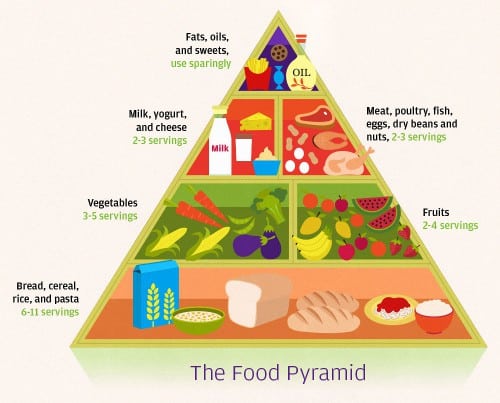
The Food Pyramid is no longer called “The Food Pyramid” but has morphed considerably in the past few years to “My Pyramid.” Now it’s most recent re-incarnation is known as “Choose My Plate” which is represented visually by dividing a round dinner plate into four equal sections, consisting of 1) Fruits, 2) Vegetables, 3) Grains, and ) a Protein source. On the right hand side of the plate is a drinking cup labeled dairy.
To redesign the “Choose My Plate” guidelines to make it healthier and more nutrient dense, the first step should be to either delete grains and dairy or make them optional. We have shown in a number of scientific publications that when grains and dairy are included in the diet they tend to displace more nutrient (vitamin, minerals, phytochemicals) dense foods such as fresh fruits, vegetables, lean meats, fish, seafood, eggs, organ meats and poultry. Our calculations show grains and dairy are nutritional lightweights for the combined 13 nutrients most lacking in the U.S. diet and when combined together (along with three other ingredients: refined vegetable oils, refined sugar and salt) become the ubiquitous processed foods that devastate health and well-being. Refined cereals, refined sugars, refined vegetable oils and dairy comprise roughly 70% of the calories in the typical U.S. diet. When we reduce or eliminate these foods and replace them with more nutritious fresh, living foods, our health improves.
The Paleo Diet can be a drastic lifestyle change. What are three pieces of advice you would give someone who is just starting to follow it?
1. Give it at least two to four weeks, and if possible get a brief blood workup by a healthcare professional and see how things change before and after. Carefully listen to your body and note how you feel after eating Paleo.
2. Work with a support group — many can be found online, and CrossFit Gyms nationwide offer a four week Paleo challenge.
3. Know that Paleo allows flexibility in the 85:15 rule, meaning what you do 85% of the time will have more impact upon your health and well-being than occasional “cheats” 15% of the time. Most people once they fully adopt Paleo, are typically are 90-95% compliant or better.
Neely Quinn, Nutrition Therapist
Neely Quinn is a Certified Integrative Clinical Nutrition Therapist. She is a huge proponent of eating Paleo because she truly believes it can help most people thrive. She is the CEO and blogger for the popular website paleoplan.com, which gets over a million page views per month. Paleo Plan provides meal plans, grocery lists and recipes for people trying to eat Paleo. Neely also sees clients with issues ranging from food sensitivities to diabetes.
As a Nutrition Therapist, I am sure you have experimented with a lot of different ways to approach healthy eating. Why are you a big fan of the Paleo Diet?
That’s true — I have experimented with a lot of approaches to eating. Whether they were all healthy or not is definitely questionable. I was a vegetarian from the age of about 12 to 22, which really REALLY messed me up. I got very sick, gained a lot of weight, had digestive problems, asthma, acne, depression and all kinds of stuff I won’t go into now. But once I started eating meat again, I definitely started to heal. My body was screaming for protein. Through the years since then, I just pinpointed more and more food sensitivities that I had. Each time I’d remove some certain food, a symptom (or two or three) would go away. Eventually I found myself faced with the fact that I could not tolerate any grains at all — even gluten-free ones — and not many legumes, either. So I stumbled upon Paleo, really, because it makes me feel the best, absolutely, no doubt about it.
Then I started using it with my nutrition clients and I found I no longer had to use the food sensitivities testing I’d been using because if I just guided them through eating Paleo, their symptoms almost always went away. I’m not saying Paleo is for everyone. There are some people who it’s just not right for — it’s not worth it to change their diet like this, and they live very symptom-free lives with no real motivation to change. But for a lot of people wanting to lose weight, get their blood sugar under control, have more energy, and better digestion (among many other things), Paleo is a great place to start.
I am sure you see a lot of people start the Paleo Diet. What is the biggest hurdle most people face when adopting it?
I talk to people every day about going Paleo. The biggest hurdle is: “But I don’t want to give up my grains. What am I supposed to eat?” (which is why they end up at PaleoPlan.com in the first place) I think it’s a big deal to cut out most of the things you eat on a regular basis, so it’s definitely a valid concern! But that fear usually goes away after about a week, when people start to find veggies, meat, seafood, eggs, delicious Paleo fats, fruits, and some nuts & seeds are all they need to make amazing foods. The thing, you can basically make anything Paleo. There’s even a book called Make It Paleo with a ton of recipes in it. You can make all your favorite desserts, just with grain-free and dairy-free ingredients, and most of the time my friends don’t even know the difference when I do it.
What are five staple foods you recommend people on the Paleo Diet keep on hand for a quick and easy snack if a fast-food craving strikes?
Meat – as in pre-cooked chicken breasts, homemade burgers, or deli-sliced turkey from the grocery store — something you can grab quickly. Often when people have a sweet craving, their body actually wants protein. We’re just so used to feeding ourselves sugary things that we turn to granola bars and cookies and stuff, which don’t really fill us up and create further blood sugar swings, then create more sugar cravings. It’s a vicious cycle. But when you’re hungry and you have meat around, you can just pair it quickly with avocado, mustard, bacon, or veggies or something and it’ll actually fill you up for a while. And it’ll help you grow muscles instead of fat, the way too much sugar does.
Sweet potatoes – I always have about three baked sweet potatoes in my fridge, which I’ll take out and eat plain (I love the white Hannah sweet potatoes) or heat up in a pan. Sometimes I’ll throw some coconut oil or duck fat on it, or just some cinnamon. If I’m in a dessert mood, I’ll add some honey to the mix. They’re a great source of carbs, which are very important in my opinion for most people trying to stay on a Paleo diet. And they’re delicious!
Eggs – I also always have hard-boiled eggs in my fridge. They’re the easiest things to make and then store in the fridge for quick breakfasts, snacks, or any meal. I’ll eat them in the morning with some smoked salmon and a piece of fruit — that’s my breakfast these days. Or I’ll chop one up and add it to my salad at dinner time, along with some turkey or pork or whatever meat I’m having that night. Easy peasy.
Some Sort of Paleo Baked Good – I always tell people when they’re first starting out Paleo, that if they have a sweet tooth, they should feed it. But only with Paleo goodies. It’s not usually realistic for people to not only change all the main ingredients in their diets, but also to never have anything sweet and bread-y, since we’re all so used to that. I’d rather see people eat the baked good that’s made with Paleo ingredients than watch them sabotage all their efforts by “cheating” with a conventional grain- and dairy-filled dessert. Usually people feel awful after eating that stuff when they’re Paleo, anyway.
Paleo baked goods don’t have to be super sweet or carb heavy. For instance, I have homemade Paleo banana bread in my freezer right now. I take it out, cut a piece off for myself on my rock climbing days and take it to the mountains with me for some quick calories and carbs. It’s not very sweet, though. It’s mostly bananas, lots of coconut oil, coconut flour, eggs, and a little bit of honey. All good stuff and it keeps me going for quite a while.
Salad Stuff – I always have greens, cabbage, and broccoli in my fridge. I chop them up quickly, add some meat to the top of the bowl, and add my dressing that I make fresh every night. It’s super quick — just olive oil, a very high quality balsamic vinegar, mustard, and a tiny bit of honey. Mix it all together and it’s amazing! So dinner takes me 10 minutes every night because I always have these things on hand.
Those are some good ones, but everyone sort of finds their own staples they love, you know?
 Melissa Hartwig, CISSN, RKC
Melissa Hartwig, CISSN, RKC
Melissa was born in Nashua, NH, and was a typical East Coast girl (active, Type-A, and never talked to strangers) until moving to Salt Lake City, UT with her husband Dallas in 2010. She quit the highest paying corporate job she’ll ever have in April of that year to found Whole9, a community focused on health, fitness, balance and sanity. Since then, Whole9 (and their original Whole30® program) has grown to serve nearly a million visitors a month, and Melissa once again has health insurance. She is the New York Times bestselling author of It Starts With Food, a Certified Sports Nutritionist through the International Society of Sports Nutrition, and is a current candidate for a master’s degree in Health and Nutrition Education from Hawthorn University.
As a Certified Sports Nutritionist and Kettlebell Instructor, I am sure you have experimented with a lot of different ways to approach healthy eating for athletes. Why are you a big fan of the Paleo Diet for athletes?
We think Paleo is a great foundation for athletes because it provides all the basic building blocks they need — not just protein, fat and carbohydrates, but micronutrients like vitamins, minerals, and phytochemicals — in a template that is easily customized to the needs of the individual athlete. The highlights: Eating this way lowers inflammation and promotes quick recovery. The nutrient-dense carbohydrates in starchy veggies are great for refueling muscle glycogen, and the moderate amount of dense animal protein encourages muscle building and repair.
I am sure you see a lot of people start the Paleo Diet. What is the biggest hurdle most people face when adopting it?
People come to the Whole30 program or Paleo with one particular food (or group) in mind they just know they can’t give up, or they’re sure isn’t a problem for them — bread, cheese and sugar are the most likely culprits. That sentiment is indicative of the fact that they want to pursue a significant change, but they’re afraid to commit to it fully. They want to keep one foot on the other lawn just in case the grass isn’t really greener. However, once we explain to them that the Whole30 provides a framework so they can still enjoy their favorite foods (and convince them to give it just a 30-day commitment) most folks find they look and feel so amazing they don’t really want to go back to their old habits.
What are five staple foods that you recommend people on the Paleo Diet keep on hand for a quick and easy snack if a fast-food craving strikes?
When you’re in a “food must happen now” apocalypse kind of situation, it’s essential to have some easy access, go-to foods. We think it’s essential to fill your kitchen with foods that require little to no prep or creativity. Best choices:
Hard-boiled eggs (we prefer pastured and organic) – This gets protein in your belly with no need to cook, perfect when you’re on the go. Top them homemade mayo or mashed avocado for a good dose of healthy fat.
Grass-fed ground beef – We love this protein because it’s so versatile, cooks quickly, and packs a nutritional punch.
Homemade mayo – Made with light olive oil instead of vegetable or soybean oil, this a versatile fat option. You can use it in tuna or chicken salad, spread it on a lettuce-wrapped burger or use it to make a delicious salad dressing or dipping sauce.
Sweet potatoes – The perfect starchy vegetable for active folks. Batch-bake or roast them and store them in the fridge for quick access.
Clarified butter or ghee (pastured and organic) – Adds gorgeous flavor and added fat and is ideal for cooking at high temperatures.
 Diane Sanfilippo, BS, NC
Diane Sanfilippo, BS, NC
Diane is a Holistic Nutritionist specializing in Paleo nutrition, blood sugar regulation, food allergies/intolerances and digestive health. She is the owner and founder of Balanced Bites, Certified Nutrition Consultant and New York Times Best-Selling author of Practical Paleo. Diane holds a bachelor’s degree from Syracuse University, a Holistic Nutrition Consultant Certification from Bauman College in Berkeley, CA, a CHEK Institute Holistic Lifestyle Coach Certification, and a Poliquin BioSignature Modulation Certification.
Why are you a big fan of the Paleo diet?
As a holistic nutritionist, I promote a nutritional template based on anti-inflammatory whole foods that support the foundations of optimal health, with a focus on healthy digestion and blood sugar regulation. The Paleo diet is exactly that: It is based on consuming nutrient-dense, health promoting, whole foods while eliminating high-allergen and nutrient-depleting, inflammatory foods. When your body and brain are supported with great nutrition, your abilities and potential to achieve and accomplish great things in life are destined for success.
What types of challenges do people face when they eliminate sugar from their diet and do you have a couple of suggestions to handle them?
This is a perfect question for me as I’ve been there done that. Before I journeyed into holistic nutrition and Paleo, sugar cravings were certainly a struggle of mine. In fact, finally getting off the blood sugar roller coaster inspired me to create The 21-Day Sugar Detox program because I felt this is a place where people really need some hand-holding. The success of that program lead to the book and its companion, The 21-Day Sugar Detox Cookbook. In The 21-Day Sugar Detox, I tell my readers what to expect each and every day throughout the 21 days. It’s not easy! There are a lot of ups and downs while your body is essentially detoxing from sugar and learning how to transition from burning only sugar to the ability to also burn fat for fuel. In the beginning, it can feel a bit like having flu: you’re tired, cranky, and foggy-headed. But, hang in there, don’t give up! It gets better and better, and soon enough (typically after the first week) you will feel amazing. Here are a few tips to help those who are getting started:
- Plan, plan, plan! I can’t stress that enough—it’s key to success. My book outlines exactly how to plan ahead 7, 5, 3, and 1 day before you get started.
- Clear your house (or at least a space in your panty and fridge) for foods that are part of your new, healthy, sugar-free plan.
- Stock up on essentials and quick fix foods for when the cravings hit (see next question below for foods to keep on hand).
- Anticipate ahead of time what options are available when you must dine out. If options are limited, eat something satiating before you go, or if it’s a party, contribute something you can eat.
- Keep a food journal. Note how your sleep, mood, energy levels, skin, other health concerns and lifestyle factors are affected.
- Connect with others on the same journey: There are tons of online resources on Facebook, Instagram, and Pinterest or host a group at your gym or workplace. You are not alone!
- Check out tons of free material, FAQ, and one-page guides on Balancedbites.com.
What are five staple foods that you recommend people on the Paleo Diet keep on hand for a quick and easy snack if a fast-food craving strikes?
These are a few ideas I have listed in my “quick-fix meal math” in The 21-Day Sugar Detox Cookbook:
Easy proteins – Jerky, Epic or Tanka Bars, eggs, lunch meat (Applegate farms has some clean-ingredient options), grass-fed hot dogs/sausage, ground meat, and sardines.
Easy fats – Avocados, guacamole, nuts & nut/coconut butters, coconut oil, olives, and extra-virgin olive oil.
Easy veggies – Lettuce for wraps, nori seaweed paper, raw sauerkraut, cut veggies for scooping/sandwiching & sautéing, and frozen veggies for quick steaming.
Easy flavor – Lemon/lime juice, hot sauces, fish sauce, mustard, olives, & spices.
Fruit – Especially fresh, whole, in-season fruit.
